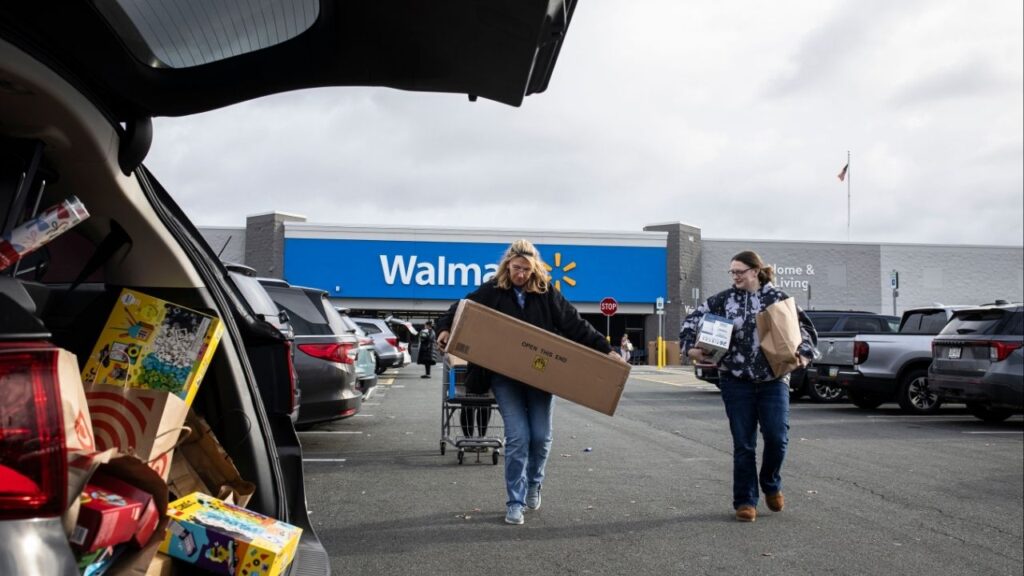Share
If you dream of buying a new house in the suburbs — or anywhere outside the urban core —the cost is going way, way up because of a California law taking effect July 1.
Others are concerned that the law will prevent hardworking Californians, many of them immigrants or minorities, from buying a home and improving their families’ economic status for generations.
Listen to this article:
But proponents say Senate Bill 743, which was passed back in 2013 and signed by then-Gov. Jerry Brown, is the best way to cut greenhouse gas emissions.
Both sides agree on this: The law’s intent is to force people out of their cars and trucks and into buses, carpools, and other alternative forms of transportation.
Forcing People Out of Their Cars
For many, it could mean the end of the dream that has helped power California’s economy since the end of World War II: a new home and a car taking you where you want to go.
“The intent is to shift people out of their cars into some alternative mode,” says Tony Boren, executive director of the Fresno Council of Governments, which is charged with transportation planning and programming in Fresno County.
The law’s tool to do that is Vehicle Miles Traveled, commonly called VMT by builders, planners, and government officials.
Effective July 1, projects will no longer be assessed a fee by how much traffic congestion is created.
If you drive a lot, your number will escalate the price of a new house — or even rent for a newly built apartment.
Some cities — Pasadena, San Luis Obispo, San Francisco, Los Angeles, and Oakland, for example — already are using VMT.
But Valley planners are now racing to beat the end of June deadline.

Law Is Aimed at Regions Like the Valley
People in Los Angeles, San Francisco, and San Diego won’t have to worry as much, the experts say. This law really is aimed at places like the San Joaquin Valley, where people often have to drive farther for work, play, and life in general.
“It’ll make housing more expensive,” said Mike Prandini of the Building Industry of Fresno-Madera Counties. “The problem is that they want to force residents into higher density living.”

“It has some unintended consequences and uneven impacts. I feel like delaying it a bit, and giving it a little more balanced input from our rural regions would be appropriate and meaningful. … I want to be careful that we don’t in any way detract from a vibrant economy.” — Keith Bergthold, executive director, Fresno Metro Ministry
“For smaller communities, to have to build more housing to have more jobs coming in, they have to pay more, it means it’s harder for them to grow down the road,” Cai said. “So, based on my conversations with a lot of stakeholders in the state, this is something that has unintended consequences.”
Keith Bergthold is a former Fresno assistant planning director who oversaw the city’s 2035 general plan update. Now the executive director of Fresno Metro Ministry, he is part of the “Better Blackstone” initiative seeking to rebuild Fresno’s central commercial corridor.
“SB 743 would help a Better Blackstone. It helps with inter-modal and mixed-used transit on the corridor. We’re privileged in that way with SB743, but that doesn’t tell the whole story,” Bergthold said.
“It has some unintended consequences and uneven impacts. I feel like delaying it a bit, and giving it a little more balanced input from our rural regions would be appropriate and meaningful. … I want to be careful that we don’t in any way detract from a vibrant economy.”
Boren foresees situations where VMT pits Valley communities against each other.
“I don’t think it would be a good idea to have Kingsburg slapping a $10,000 VMT fee on their houses, when their neighbor Selma chooses not to do anything because they just felt like, no,” he said. “We want to keep the price of our housing affordable.”
In addition, Cai is concerned about VMT’s effect on Highway 99 and other Valley transportation corridors.
“VMT is going to be the threshold and metric for measuring transportation impacts,” she said. “In a way, it will be much harder to build capacity and increase projects on our highway system.”
Watch UC Experts Explain SB 743
Driving Up Housing Costs
The VMT fee will go on top of the other costs already passed along to home buyers during a time when affordability is a challenge for many residents. The California Association of Realtors recently reported that only 31% of Californians could afford a “median-priced, existing single-family home.”
Though it’s acknowledged that new housing prices in the Valley will soar, only the city of Clovis knows its specific VMT goal.
Down the line, VMT calculations could be made by actually tracking residents’ driving habits.
“No, we are not tracking people’s travel through their cell phone data in this project, although I have no doubt sometime in the future, technology will get us there,” Cai said.
The new planning method requires developers in suburbs to provide things like bike lanes, transit hubs, pedestrian bridges, or access to office space and grocery stores if they want to soften the impact of the VMT fee. However, electric and hybrid vehicles don’t count in the state’s latest version of new math. VMT is all about how far you drive — not the emissions coming out of your car.
The Clovis Example
Fresno COG’s has calculated a 16 vehicles miles traveled average for development in Clovis. Going forward, the VMT goal for Clovis will be 14 VMT. That might sound easily attainable, but it’s expensive.
While the developer bears the costs upfront, it is passed on to homebuyers and renters.
The story doesn’t end there, however.
If the state audits the vanpool and finds that few residents are using it because people would rather drive themselves, the state could require new mitigation to reach the VMT threshold, Prandini said.
Other Fresno County cities will have different VMT goals based on how far COG calculates their residents are driving now.

California Housing Crisis
When Gov. Newsom took office, he pledged to build 3.5 million homes by 2025 to alleviate the housing shortage.
But, as CalMatters reported, Newsom’s promises have since contracted. He now calls the 3.5-million unit pledge “a stretch goal” and told the Los Angeles Times, “It’s a stubborn issue. You can’t snap your fingers and build hundreds of thousands, millions of housing units overnight.”
Prandini says SB 743 will only add to the state’s housing woes: “No one is going to go forward with a project after July 1 until this all settles out. You may wind up in a situation where there’s a lapse of available product for a while.”

What the VMT Supporters Say
Backers of SB 743 say it will help California eliminate greenhouse gases and provide more housing for those in dense cities. That’s because developers would be encouraged to build more housing in high-density cities, thus allowing more opportunities for people to live near where they work.
Ted Lamm, Research Fellow at the UC Berkeley School of Law, says: “It’s possible that the cost of mitigation will be higher now, but it’s more that the costs before mitigation went to projects like widening roads and adding new access lanes and now they will go to transit projects and other benefits.”
Lamm said he believes the overall costs will go to improvements benefitting an entire region — “transit or office space or shopping on or near a site in a way that benefits those communities more.”
You can read more from pro-VMT supporters at this link.
Watch: How VMT Is Calculated
SB 743’s Back-Room History
Gov. Brown signed SB 743, back in 2013. He’s now retired and living on a ranch in Colusa County. The biggest city he lives near is Williams with a population of 5,643. It’s 60 miles from the nearest large city of Sacramento.
The author of the bill, then-Sen. Darrell Steinberg, crafted the legislation to get an arena built for the NBA’s Sacramento Kings. He’s the Sacramento mayor now.
“There’s been a sort of relatively long history now in California of letting some big projects like sports stadiums get this special legislative treatment, where they essentially are guaranteed fast-tracked CEQA (California Environmental Equality Act) judicial review,” said Ethan Elkind, who leads the Climate Change and Business Research Initiative on behalf of the UC Berkeley and UCLA Schools of Law.

“Some folks in Gov. Brown’s administration saw an opportunity to do what was really sort of a long-standing need to update how we did transportation impacts analysis. I don’t want to say they kind of snuck through this change, but it kind of got tacked on to the (arena) legislation towards the end of session.”
How Does COVID-19 Affect VMT?
Boren, the Fresno COG executive director, says that the law’s implementation could be delayed by the coronavirus pandemic.
“Sacramento, believing that they have the right ideas in terms of how people should live their lives right here in (Central) California, but the reality is every region is unique it’s different,” Boren said. “So, knowing that 98% of our people use their car to get around to try to shoehorn you know people into higher densities and charges and fees because you’re going to use their cars, I don’t know if that’s going to take.
“Truthfully, with this COVID-19 situation, in my mind, all bets are off.”
Voice Your Opinion
If you want to express your thoughts — pro or con — about the law, contact your Assemblymember, state Senator, or Gov. Newsom. Click this link to find lawmaker contact information. Newsom can be reached at this link.
However, many of them weren’t in the Legislature when the bill was signed. Assemblyman Jim Patterson (R-Fresno) voted against the bill in 2013. Patterson and state Sen. Andreas Borgeas (R-Fresno) are the only Valley lawmakers to tell GV Wire they would vote to delay its implementation.
“While Sen. Borgeas was not a member of the Legislature during the time this bill was passed, he would support a plan for regional implementation as well as delaying its implementation altogether until the emergency orders for COVID-19 are lifted,” his office said in a statement to GV Wire.
Caltrans has an entire section on its website devoted to VMT planning and its impact on the future of state highways. You can provide feedback to Caltrans through June 15 at this link.
Q&A with Authors of UC Berkeley Report on SB 743
UC’s Elkind teamed with Lamm and then UC Berkeley law student Eric Prather, to write a 2018 analysis of SB 743.
GV Wire: More People Telecommute for Work Now Than in 2013, How Is That Factored?
Elkind: So, if it’s work from home, you know that that’s the sort of strategy to reduce vehicle miles traveled, then to really have a defensible environmental analysis and a defensible set of mitigation measures. You can’t just sort of take the developer’s word for it, you’d have to see that there are some programs in place, maybe to fiscally reward people who are working from home or some sort of requirement about how much driving they’re doing. You’d have to see something enforceable there.
If People Use Electric Vehicles, Does That Mitigate Miles Traveled?
Elkind: If it’s electric vehicles, that’s actually a separate analysis because whether they’re electric or gas guzzlers it doesn’t really matter. We’re talking about transportation impacts as cars on the road, congestion, overall driving miles. Where that would come into play is the impacts on greenhouse gas emissions or air quality. That is a separate analysis done under the California Environmental Quality and that’s where they would get credit.
Will the State Hold to the July 1 Implementation Despite the COVID-19 Crisis?
Lamm: It will go into effect July 1st. From that date, developers on new projects will need to start doing different analyses. So, the actual on the ground impact will be multiple years out from that, where the first projects that are actually built under this new law, go on the ground and have to mitigate the impacts that are different from the ones they previously did. So it’s not like there will be an on-the-ground shift in August of 2020. It will be in 2021 and 2022 when those projects start to get built, so there’s plenty of time.
Categories

US House Passes Bill to Fast-Track Natural Gas Pipeline Permitting

Big Businesses Are Cashing In on Trump’s Tax Cuts
















